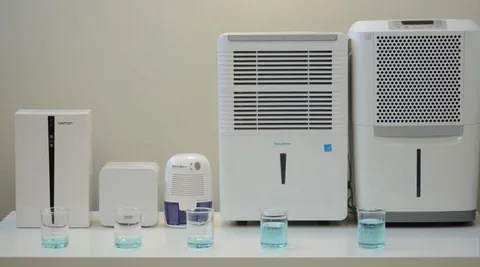A dehumidifier is an essential appliance in many homes, especially in areas with high humidity. It helps control moisture levels, preventing mold growth, reducing allergens, and improving indoor air quality. However, to keep your dehumidifier working efficiently, regular maintenance is crucial. This article will guide you on how to maintain your dehumidifiers: cleaning, filters, and troubleshooting to ensure it performs optimally year-round.
Why Maintenance is Important
Like any household appliance, a dehumidifier requires care to function correctly. Neglecting maintenance can lead to reduced efficiency, higher energy consumption, and even premature breakdowns. Proper upkeep not only extends the lifespan of the device but also helps maintain a healthy indoor environment.
Cleaning Your Dehumidifier
One of the most critical steps in how to maintain your dehumidifier: cleaning, filters, and troubleshooting is regular cleaning. Dirt and dust can accumulate inside the machine, affecting its performance.
Steps to Clean Your Dehumidifier
- Unplug the Unit: Always ensure the device is unplugged before cleaning to avoid electrical hazards.
- Empty the Water Tank: Remove and empty the water collection tank regularly to prevent mold and mildew buildup.
- Clean the Water Tank: Use warm, soapy water or a mild disinfectant to clean the tank. Rinse thoroughly and dry before placing it back.
- Wipe Down the Exterior: Use a damp cloth to clean the outside of the unit, removing dust and grime.
- Clean the Coils and Grills: Use a vacuum with a brush attachment or a soft brush to clean the coils and air intake grills. This step improves airflow and efficiency.
Maintaining and Replacing Filters
Filters are essential for trapping dust, allergens, and other particles. Keeping the filters clean is a vital part of how to maintain your dehumidifier: cleaning, filters, and troubleshooting.
How to Care for Your Dehumidifier Filters
- Check Regularly: Inspect the filter every 2-4 weeks, depending on usage and environmental conditions.
- Clean the Filter: Many filters are washable; rinse them under lukewarm water and let them dry completely before reinstalling.
- Replace When Needed: If your filter is damaged or excessively dirty, replace it according to the manufacturer’s guidelines, typically every 3-6 months.
Troubleshooting Common Dehumidifier Issues
Even with regular maintenance, you may encounter issues with your dehumidifier. Knowing some basic troubleshooting tips helps you address problems quickly.
Common Problems and Solutions
- Unit Not Turning On: Check the power supply, ensure the plug is secure, and verify the outlet is functioning.
- Dehumidifier Not Collecting Water: Clean the coils and filters; also, ensure the humidity setting is appropriate.
- Water Tank Full Indicator Stuck: Empty and clean the tank, and inspect the sensor for dirt or debris.
- Strange Noises: Clean or replace the fan and motor components; ensure the unit is on a flat surface.
Conclusion
Understanding how to maintain your dehumidifier: cleaning, filters, and troubleshooting is essential for keeping your device running smoothly and efficiently. Regular cleaning, proper filter care, and basic troubleshooting will not only enhance performance but also extend the life of your dehumidifier, ensuring a healthier living space.
By following these simple steps, you can enjoy the benefits of controlled humidity without the hassle of frequent repairs or replacements.


